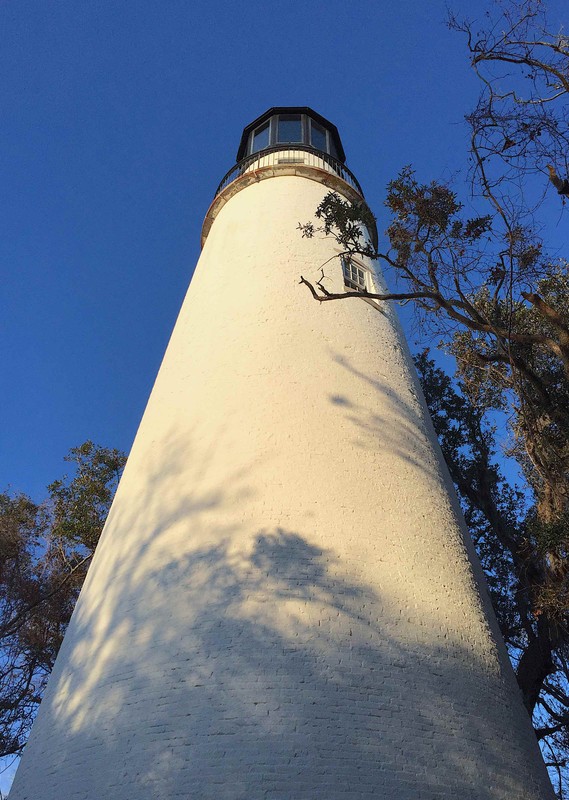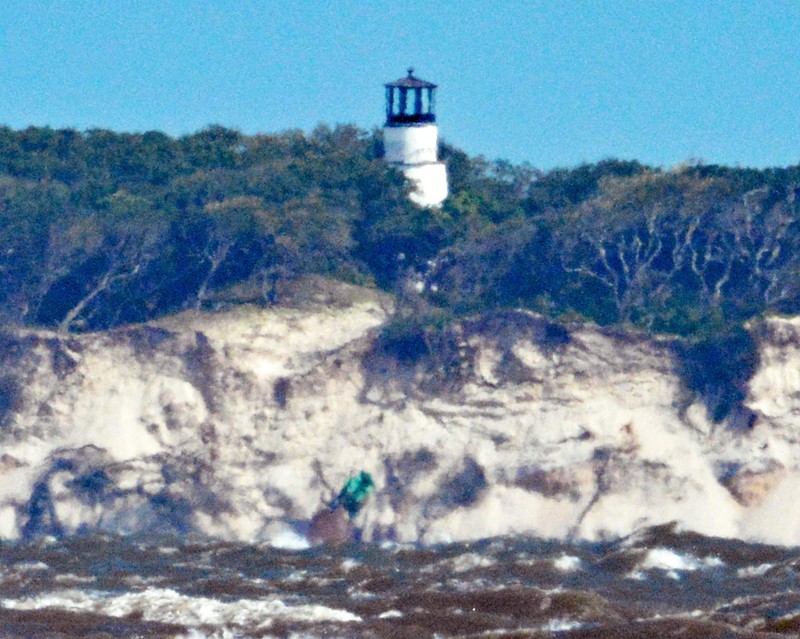Little Cumberland Island Light
Introduction
Text-to-speech Audio
Images
Photograph of the Little Cumberland Island lighthouse after its restoration in 2016

The lighthouse as seen from Jekyll Island

Backstory and Context
Text-to-speech Audio
The need for a lighthouse at the entrance to St. Andrew Sound was recognized as early as 1802, when money was appropriated by Congress for this purpose. In 1817, John Floyd sold 6 acres on the north end of the island to the United States government for $500. The 60-foot-tall Little Cumberland Island Lighthouse was designed by Winslow Lewis and built in 1838. The compound included the lighthouse, a keeper's cottage, a warehouse, and a privy.
It had 14 Lewis lamps generating a fixed light. This distinguished it from the older tower to the south that had a revolving light. The lantern room received its third-order Fresnel lens, manufactured in France by Henri LePaute, in 1857. The new light had a range of 14 nautical miles (16 miles) with a focal height of 71 feet about sea level. In 1858 the last slave ship to reach the shores of the United States, the "Wanderer," enlisted the help of the lighthouse keeper to safely guide the ship through St. Andrew Sound to Jekyll Island, the island just north of Little Cumberland. It was damaged during the Civil War. In 1874, a brick wall was built around the lighthouse to protect it from the encroaching sea. The lighthouse was in service until 1915, when it was deactivated.
The keeper's house and all other light station buildings, are long since gone. While the known outbuildings have all been destroyed, the foundation of the keeper's cottage is partially visible. Thanks to dedicated owners, the lighthouse has been restored and remains in pristine condition. The lighthouse was renovated by the owners from 1994 to 1998 and again in 2016 by the nationally acclaimed company The Durable Restoration Company.
On the interior there is a replacement wooden spiral stair supported by a central wooden post with a mid-level mezzanine wooden platform and then at the top of the wooden stair another wooden platform. From that platform to the next wooden platform/floor there is a cast iron beam which supported the firepot which was used for the original light. There is a small metal ladder leading to this platform/floor. At this upper level, where the light once was, there are now jalousie glass windows on all sides. The site is behind a sand dune and is covered with vegetation, including live oaks, pines, and native shrubs. The lighthouse house and surrounding property is privately owned and is not open to the public. A large dune protects the lighthouse from the ocean, and as a result, the tower is now barely visible from the water.
Sources
Little Cumberland Island Light, National Register of Historic Places. Accessed July 28th 2020. https://npgallery.nps.gov/GetAsset/804f821e-5270-4dcd-b31f-fa1ccb4bbf10/.
